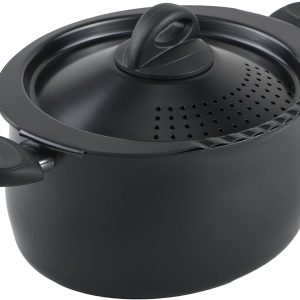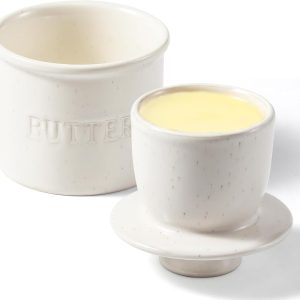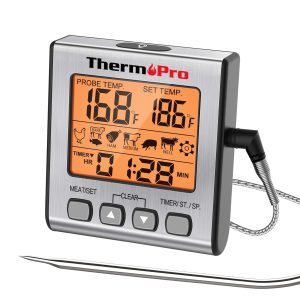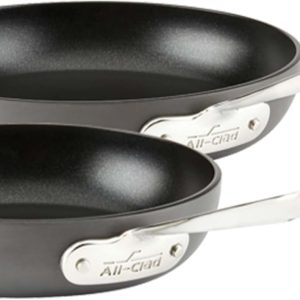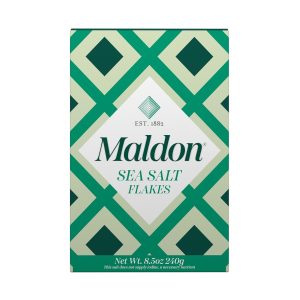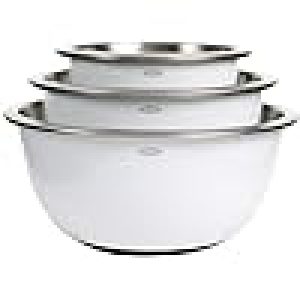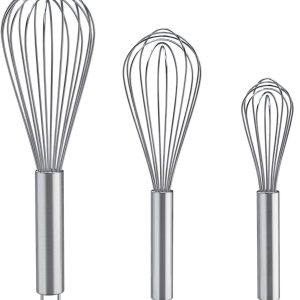I watch a lot of cooking videos online. Some to learn. Others simply to be entertained. But so many viral cooking videos prioritize speed and visual appeal over proper technique, often leading to poor results when tried at home. Believe me, I know through experience.
I’m not a trained chef – unless you count a bazillion hours of Food Network TV and PBS cooking shows. I don’t come close to doing everything right in the kitchen, but so much of what I see in these viral videos is just WRONG. It’s also important to remember that many of these cooking or food video content providers are also not professional chefs. They are leveraging their platform for clicks and views to make money.
For me, some trends are just mildly irksome leaving me shaking my head, but many actually fail in practice and don’t work. Stop doing them!!
- Cooking Pasta Directly in Sauce Without Boiling It First (Unless It’s a One-Pot Recipe)
The Problem: This trend claims that adding dry pasta directly into a simmering sauce will save time and create a richer flavor. However, unless it’s a carefully structured one-pot recipe, this often leads to uneven cooking. Dry pasta needs a significant amount of water to hydrate evenly. Simmering in a thick sauce results in some parts being overcooked while others remain tough.
You’ll also end up with a starchy, gummy texture. Pasta releases a lot of starch as it cooks. Without enough water, it turns gluey, making the sauce overly thick and sticky. The pasta will also be unable to absorb maximum flavors. Properly cooked pasta absorbs sauce better than one that has been cooked directly in the sauce because the surface stays smooth and pliable.
A Better Approach: Cook pasta in properly salted boiling water, then finish it in the sauce for the last 1-2 minutes to allow the flavors to meld. If making a one-pot pasta dish, ensure there is enough liquid (broth or water) for even cooking.
- Swapping All-Purpose Flour for Almond or Coconut Flour in a 1:1 Ratio
The Problem: Many gluten-free or low-carb recipes use almond or coconut flour, but viral posts often suggest simply replacing all-purpose flour with them at a 1:1 ratio. This rarely works because different types of flour have different absorption rates. Coconut flour is highly absorbent and requires much more liquid, while almond flour lacks gluten, which provides structure.
You’ll end up with texture issues as a direct swap often results in dense, crumbly, or dry baked goods. Using the 1:1 substitute ratio also creates a weaker binding ability. Without gluten, baked goods won’t rise or hold together properly.
A Better Approach: Follow a recipe specifically designed for alternative flours. If modifying, use a blend of gluten-free flours and add binders like eggs or xanthan gum to improve texture.
- Spreading Cold Butter on Toast Instead of Letting It Soften First
The Problem: Many videos show people taking cold butter straight from the fridge and spreading it directly onto toast or sometimes using a grater. While this may seem convenient, it leads to tearing the bread. Cold butter is too firm and does not spread evenly, often ripping soft bread. It also leads to uneven melting with some of the toast remaining unbuttered while other areas have thick, unmelted chunks. Melted butter soaks into the bread better, enhancing flavor and creating a crispier bite.
A Better Approach: Let butter soften at room temperature for 10-15 minutes before spreading. Use a butter bell or container to store softened butter for easier spreading. You can also melt the butter first and brush it onto toast for better absorption.
Ceramic French Butter Crock with Lid for Countertop
Original price was: $16.99.$14.99Current price is: $14.99. -12%- Searing Meat Straight from the Fridge Without Letting It Come to Room Temperature
The Problem: Many people skip the step of letting meat rest at room temperature before cooking, assuming it doesn’t make a difference. This leads to uneven cooking. The exterior sears while the interior remains cold, causing an overcooked outside and undercooked inside. A cold surface releases excess moisture, steaming the meat instead of developing a flavorful crust.
A Better Approach: Let meat rest at room temperature for 20-30 minutes before cooking. Pat the surface dry with a paper towel to ensure proper browning. Use a meat thermometer to ensure proper doneness.
ThermaPro Meat Thermometer (great for grilling and smoking)
Original price was: $26.99.$21.99Current price is: $21.99. -19%- Using Olive Oil to Cook Eggs in a Nonstick Pan
The Problem: Olive oil is commonly used in egg recipes, but it is not ideal for cooking eggs in a nonstick pan because it has a low smoke point. Olive oil burns at lower temperatures than butter or neutral oils, leading to bitter, off-flavors. Butter contains milk solids, which help create a smoother, more custard-like texture in eggs. Olive oil alone can leave them dry.
A Better Approach: Use butter or a neutral oil (like avocado oil) for better flavor and texture. If using olive oil, cook at a lower heat to prevent burning.
- Adding Oil to Pasta Water to Prevent Sticking
The Problem: This classic myth is still being spread in viral cooking content, but it actually does more harm than good. Olive oil coats the pasta. This prevents sauce from adhering properly, making dishes less flavorful. The key to preventing pasta from clumping is stirring frequently in the first few minutes, not adding oil.
A Better Approach: Skip the oil. Stir the pasta regularly as it cooks. Toss cooked pasta with sauce immediately to prevent sticking.
- Baking Avocados to Ripen Them Faster
The Problem: Some kitchen hacks claim that baking unripe avocados in the oven will speed up ripening. Not true. Ripening is a natural enzymatic process that happens over time, not through heat. Heating an unripe avocado makes it mushy on the outside while the inside remains hard, with a slightly bitter taste.
A Better Approach: To ripen avocados quickly store them in a paper bag with a banana or apple to trap ethylene gas. If you need an avocado immediately, mash or blend it instead of baking it.
- Using Flake Salt as a Seasoning Instead of a Finishing Salt
The Problem: Flake salt (such as Maldon or Jacobsen) is designed for finishing dishes, not for seasoning during cooking. It has a delicate, crisp texture and dissolves slowly, which makes it great for adding bursts of salinity on top of food. However, when used incorrectly flake salt dissolves inconsistently, leading to uneven seasoning. Some bites will be overly salty, while others will lack flavor.
If you try to use it in baking, its irregular size means it won’t distribute evenly in batters or dough, creating pockets of salt instead of a balanced flavor. Plus, flake salt is more expensive than table salt or kosher salt. Using it during cooking wastes both money and its unique texture.
A Better Approach: Use kosher salt, which dissolves evenly and provides reliable seasoning. Save the flake salt for just before serving on grilled meats, salads, or chocolate desserts for enhanced texture and controlled saltiness.
- Mixing Ingredients in a Container Instead of Using a Bowl
The Problem: So many viral videos show people skipping traditional mixing techniques by putting ingredients in a fully closed container (like a Tupperware, a jar, or a deli container) and shaking vigorously. While this might seem efficient, it often leads to uneven mixing. Shaking does not properly emulsify dressings, blend batters, or distribute dry and wet ingredients uniformly.
Additionally, ingredients that require aeration (such as whipped cream or pancake batter) won’t develop the proper structure. Shaking doesn’t allow you to control mixing intensity, leading to streaky batters or overworked dough. You’ll also likely end up with a mess and leaks. Unless the container is perfectly sealed, liquids often leak, creating more mess than using a simple bowl and whisk.
A Better Approach: A jar with a loose shake can work for vinaigrettes or marinades, but using a whisk or immersion blender ensures a better emulsion. For baking you need to use a bowl and appropriate tools (whisk, spatula, or electric mixer) for even distribution and controlled texture. Stop mixing everything directly in the baking pan.- unless it's a dump cake. And, if you’re attempting to coat proteins (like chicken wings) use a large bowl with gentle tossing to ensure uniform coverage without crushing delicate ingredients.
OXO Good Grips 3-Piece Stainless-Steel Mixing Bowl Set
Original price was: $59.95.$52.10Current price is: $52.10. -13%These are just a few examples of how social media shortcuts can backfire in the kitchen. Cooking with proper techniques (and some common sense) almost always produces better results than viral hacks designed for views over taste.


